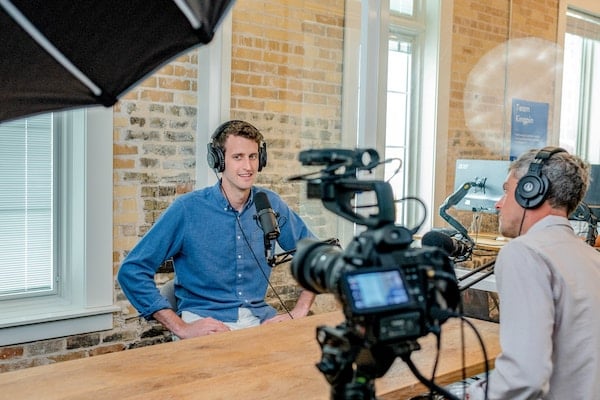


Publishing is getting increasingly creative to entice more subscriptions and print readers. Check out the YouTube channel of Harper’s Bazaar, for instance, and you’ll see behind the scenes of The Jonas Brothers’ photoshoot and featured story in the print version of the magazine. The New York Times offers top news via its podcast called The Daily and has hit 1 billion downloads. Click on the link to a daily podcast and you’ll be invited to do some background reading on the topic.
With more options for video journalism, editorials and audio podcasts, print publishers are reaching a broader audience. This begs the question: Are video and audio helping the print industry?
Will the camera soon replace the keyboard?
Social media platforms are becoming more challenging for publishers to work with and there’s still much discussion about whether those platforms are publishers. Facebook is still trying to figure out a way to pay some publishers for their content but trust in the accuracy of what’s published has become gradually eroded. Keyboard warriors can hide who they are behind their computer screens and put content out into the internet that may or may not be true. The continued need for followers also means that content is shared, again and again, spawning more stories that are not verified but meant to speak directly to certain echo chambers. This mistrust in the written word, and the writers behind it, has led to additional consumption of video and audio content.
When watching a video or listening to audio, the viewer/listener determines whether they can trust the writer/speaker. From the sound of their voice, the listener is able to detect emotion, sarcasm and inflection. Watching a video, the viewer can pick up body language cues to determine the author’s sincerity or passion. Instead of reading the words of a keyboard warrior, the viewer gets a truer sense of the person behind those words.
Audio and video also put the viewer in the room with the story. Watching a behind-the-scenes photoshoot of a Time magazine cover or listening to the sounds of a protest draws the audience closer to the action. Just as the nightly news shares a powerful piece of journalism with their audience, print publishers have the same opportunity to reach their readers, beyond the page.
Publishers can jump on the A/V trend by establishing true editorial voices among their staff. Writers can be more customer-facing and become influencers. Their enthusiasm for a subject matter or dedication to a topic can establish thought leadership through podcasts or videos and encourage more trust in the medium. The audience has the chance to decide that they like the influencer and trust the voice, and therefore they’re more apt to subscribe or buy the print version to get more. To take it even further, publishers can track revenue to the writers to determine attribution, giving the writers even more incentive to keep producing.
Spotify’s CFO predicted recently that audio streaming will be bigger than video streaming in the next five years. YouTube and other popular streaming platforms aren’t disappearing any time soon, however, with 2019 global statistics showing YouTube as the 2nd most popular social network.
Whether the camera will replace the keyboard is still to be seen but publishers are wise to consider audio and video content consumption as part of their overall subscription strategy. They can complement each other if integrated well and continue to encourage audiences to come back for more.